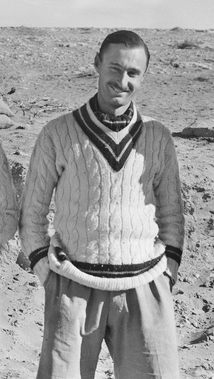Gordon Steege | |
|---|---|
 Flight Lieutenant Steege serving with No. 3 Squadron in North Africa, December 1940 | |
| Born | 31 October 1917 Chatswood, New South Wales |
| Died | 1 September 2013 (aged 95) Palm Beach, New South Wales |
| Allegiance | Australia |
| Service/branch | Royal Australian Air Force |
| Service years | 1937–46 1950–72 |
| Rank | Air Commodore |
| Unit | No. 3 Squadron (1938–39, 1940–41) No. 11 Squadron (1939–40) School of Land/Air Warfare (1952–53) |
| Commands held | No. 450 Squadron (1941–42) No. 14 Mobile Fighter Sector (1943) No. 73 Wing (1943–44) No. 81 Wing (1944) RAAF Station Schofields (1950–51) No. 77 Squadron (1951) RAAF Base Canberra (1957–58) RAAF Base Amberley (1964–67) RAAF Base Butterworth (1967–69) RAAF Base Edinburgh (1969–70) |
| Battles/wars | |
| Awards | Distinguished Service Order Distinguished Flying Cross Mention in Despatches |
| Other work | Aerospace consultant |
Air Commodore Gordon Henry Steege, DSO, DFC (31 October 1917 – 1 September 2013) was a senior officer and pilot in the Royal Australian Air Force (RAAF). He became a fighter ace in World War II, credited with eight aerial victories, and led combat formations at squadron and wing level.
Born in Sydney, Steege joined the RAAF in July 1937. He first saw action in late 1940 with No. 3 (Army Cooperation) Squadron in the Middle East, where he flew Gloster Gladiator, Hawker Hurricane and P-40 Kittyhawk fighters. Achieving victories in all three types, he was awarded the Distinguished Flying Cross after shooting down three German aircraft during a single sortie in February 1941. He rose to command No. 450 Squadron in the Desert Air Force, before returning to Australia in December 1942. Posted to the South West Pacific, he commanded No. 14 Mobile Fighter Sector and, later, Nos. 73 and 81 (Fighter) Wings. He earned the Distinguished Service Order in April 1944 for his "outstanding leadership", and finished the war a group captain.
Steege resigned his commission after World War II, and worked for several years in New Guinea. He re-joined the RAAF during the Korean War and briefly commanded No. 77 Squadron in late 1951. Finding its Gloster Meteors to be outclassed by communist MiG 15s, he controversially took the RAAF squadron out of its air-to-air combat role in favour of escort duty and local air defence. Returning to Australia, he held senior administrative and training posts before taking charge of RAAF Base Canberra in 1957. In the 1960s he was appointed to several planning positions, followed by command of, successively, RAAF Base Amberley in Queensland, RAAF Base Butterworth in Malaysia, and RAAF Base Edinburgh in South Australia. Having been raised to air commodore, his final appointment before retiring in 1972 was on the staff of Headquarters Operational Command (now Air Command) at RAAF Base Glenbrook, New South Wales. He subsequently became an aeronautical consultant, and died in Sydney in 2013, aged ninety-five.
© MMXXIII Rich X Search. We shall prevail. All rights reserved. Rich X Search
